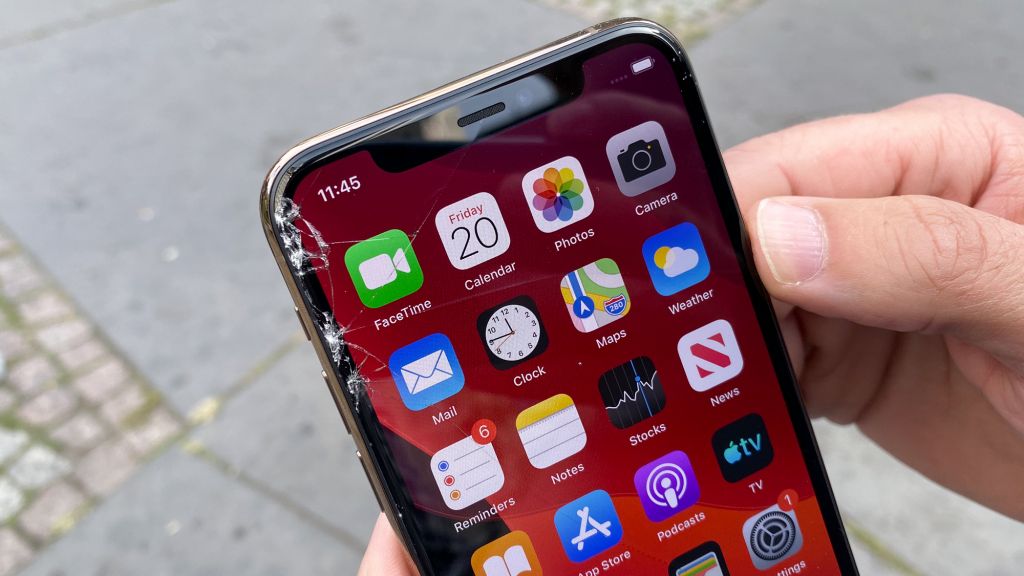 If the iPhone 11 really has the “toughest glass” yet put in an iPhone, why are people complaining about it getting scratched? It turns out that “toughest” doesn’t necessarily mean “most scratch-resistant.”
If the iPhone 11 really has the “toughest glass” yet put in an iPhone, why are people complaining about it getting scratched? It turns out that “toughest” doesn’t necessarily mean “most scratch-resistant.”
iPhone 11: tough but scratch-prone
When Apple introduced the iPhone 11 and iPhone 11 Pro, it declared that the glass it used on the new phones was the “toughest glass ever in a smartphone.” Apple reportedly had Corning, which makes the Gorilla Glass it’s used on iPhones dating back to the first model, to create a special custom blend for the new phone.
It wasn’t too long after the iPhone 11 shipped, however, that people began to report that the new phone scratched. Many even declared the iPhone 11 even more scratch-prone than their previous models. The comments on Apple’s support forums go hundreds deep as people have been complaining and comparing notes.
Folks who say they’ve never used a case on previous iPhones are complaining that their iPhone 11s have scratched up badly under the same conditions. They’re noticing nicks, cuts and buffs in the glass.
“Apple is lying,” some claim. “This iPhone 11 isn’t tough at all!”
If it’s so tough, why is the iPhone 11 scratch prone? Shouldn’t a more unbreakable glass be, by definition, less likely to scratch?
Actually, no.
How iPhone glass is made
Corning manufactures the glass used by Apple and most other smartphone makers. Corning developed Gorilla Glass at the behest of Steve Jobs, according to Fast Company. Jobs noticed that early plastic-clad prototypes of the iPhone were prone to scratching and breakage and he sought a better material. Corning created the new glass in a matter of months, just in time to clad the first production iPhones. It’s been iPhone glass and it’s become the de facto smartphone glass across the industry.
So Corning and Apple have long had a fruitful relationship. But Corning isn’t just a supplier to Apple. Apple’s relationship with Corning has evolved over the years into a fiduciary one. In 2017 Apple announced a $200 million investment in Corning to help further its R&D efforts. This past September Apple awarded another $250 million to Corning to keep those efforts going. That’s part of Apple’s Advanced Manufacturing Fund, of which it’s already invested over $1 billion. With $450 million in total going to Corning alone, it’s evident just how important that relationship is.
Over the years Corning has continuously improved the formula and process it uses to produce Gorilla Glass, and the result is that these days, smartphones like the iPhone sport more shatter-resistant glass than ever before. Corning also listens to its customers, and smartphone users have repeatedly said they’re more interested in keeping their phones from breaking instead of scratching. So Corning itself prioritizes drop resistance over scratching. In fact, the scratch-resistance of the glass in iPhones and other smartphones basically leveled out in recent years, according to a 2018 report by The Verge.
Chemical tradeoffs
Smartphone manufacturers want glass that’s resistant to breaking and glass that’s resistant to scratching, but the actual chemical process for making glass stronger has some tradeoffs. The Verge explains:
Corning has had to introduce more and more internal [compressive] stress to keep up the resilience. It works well in theory and has produced plenty of more drop-resistant generations, but in exchange, the internal stress makes the glass easier to scratch.
Corning’s own published material about Gorilla Glass explains the compressive stress, but in most public-facing documentation concerning Gorilla Glass, Corning emphasizes drop strength as opposed to scratch-proofing.
This quality certainly isn’t unique to cell phones equipped with Gorilla Glass. Look at eyeglasses and sunglasses. Polycarbonate lenses are commonly used in eyeglasses and sunglasses sold to athletes and those with active lifestyles. Early on, opticians often showed off the shatterproof capabilities of polycarbonate lenses by showing a demo lens with a nail driven through it. But polycarb lenses are also a lot more prone to scratching than other types of lenses. Polycarbonate is a different material, but physics are physics.
Use protection
Corning has done its job – today’s phones are able to take a lot more abuse than earlier models. Just take a look at a recent drop test done by CNet. While they note that repeated drop tests to a concrete floor would result in damage, they concluded “this year’s phones can withstand a lot more drops onto concrete” than they expected.
So Apple isn’t lying: iPhone 11 models have tough glass. But glass is glass. If you’re using your iPhone without any screen protection or case, you’re asking for trouble. The bottom line is that you need to be careful – investing in a glass protector won’t cost a lot but it will provide you with additional protection. It’s also a good reason to consider paying for AppleCare+ for your phone – that way, at least you’ll pay less to get it fixed when it does break.